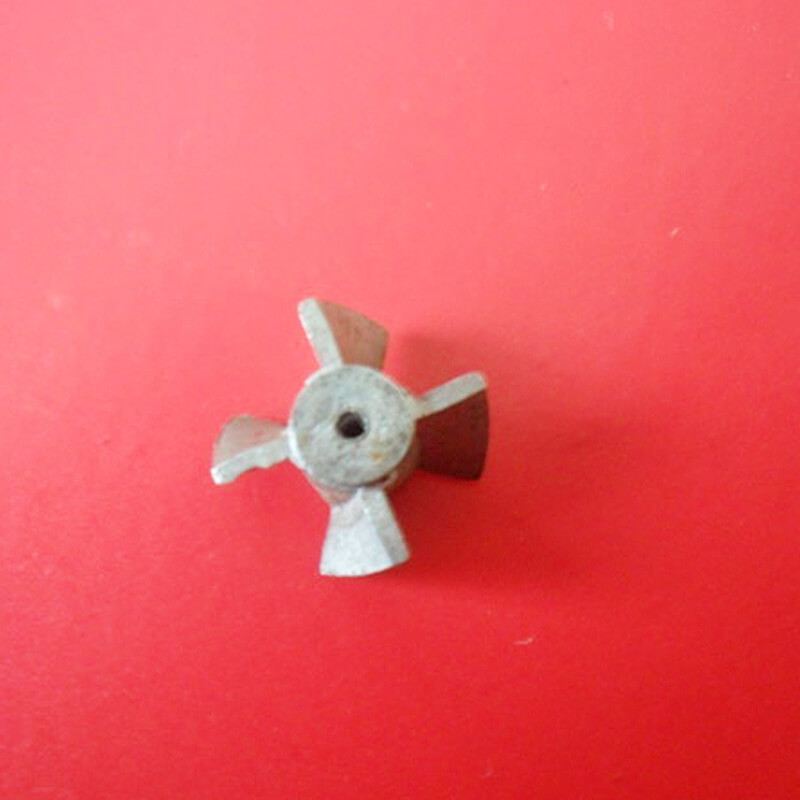Complexity
MIM (metal powder injection molding) is the same as injection molding, and there are no restrictions on the shape design. Since MIM is a forming process, additional product features will not increase the cost, which makes MIM an ideal way to combine individual parts into multifunctional products. The MIM design rules are very similar to injection molding, which is applicable to almost all products.
Precision
The reference design of MIM (metal powder injection molding 4) net forming accuracy is usually ±0.5% of the size. Certain characteristics can achieve a net shape of ±0.3%. As with other technologies, the higher the accuracy requirements, the higher the cost. Therefore, it is encouraged to relax the tolerance requirements appropriately when the quality permits. Tolerances that cannot be achieved by MIM one-time forming can be achieved by surface treatment.
Weight and dimensions
MIM is particularly suitable for parts weighing less than 100 grams, and less than 50 grams is the most economical. However, parts weighing up to 250 grams can also be handled. The main cost of the MIM process is raw materials, so MIM uses new technology to minimize the weight of parts. Like plastic products, the weight of parts can be reduced through the inner core and the bracket without affecting the integrity of the product. MIM has outstanding performance in extremely small and micro parts, and weights less than 0.1 grams are also feasible. Weight is not a limiting factor, and products longer than 250mm can also be processed.
Thinning
Wall thicknesses less than 6 mm are most suitable for MIM. Thicker outer walls are also possible, but the cost will increase due to the long processing time and the addition of additional materials. In addition, extremely thin walls less than 0.5mm can also be achieved for MIM, but there are high requirements for design.
Yield
MIM is a more flexible process, and the annual demand of several thousand to several million can be realized very economically. Like castings and injection molded parts, MIM requires customers to invest in molds and tooling costs, so for small batch products, it usually affects cost estimates.
raw material
MIM can handle many materials, including iron alloys, super alloys, titanium alloys, copper alloys, refractory metals, cemented carbides, ceramics and metal matrix composites. Although non-ferrous alloys of aluminum and copper are technically feasible, they are usually processed by other, more economical methods, such as die casting or machining.

MIM process flow
The MIM process flow combines the flexibility of injection molding design with the high strength and integrity of precision metals to achieve a low-cost solution for extremely complex geometric components. The MIM process is divided into four unique processing steps (mixing, forming, degreasing and sintering) to realize the production of parts, and determine whether surface treatment is required according to the product characteristics.
mixing
Fine metal powders with a particle size of less than 20µ are mixed with thermoplastics and paraffin binders in precise proportions. The volume of metal powder and binder is about 60:40. The mixing process is carried out in a special mixing equipment, heated to a certain temperature to melt the binder. In most cases, mechanical mixing is used until the metal powder particles are evenly coated with a binder and cooled to form particles (called raw materials), and these particles can be injected into the mold cavity.
Forming
The equipment and technology of injection molding are similar to those of injection molding. The granular raw material is fed into the machine to be heated and injected into the mold cavity under high pressure to form a green part (green part) after cooling and demolding only at about 200°C to melt the binder (fully fused with the metal powder). The whole process can be carried out. The mold can be designed as multi-cavity to improve productivity. The cavity size is designed to be 20% larger than the metal parts to compensate for the shrinkage generated during the sintering process. The shrinkage change of each material is accurate and known.
Degreasing
Degreasing is the process of removing the binder from the formed part. This process is usually done in several steps. Most of the binder is removed before sintering, and the remaining part can support the parts into the sintering furnace. Degreasing can be accomplished by a variety of methods, the most commonly used is solvent extraction. The degreased parts are semi-permeable, and the remaining binder is easily volatilized during sintering.
sintering
The degreased parts are placed in a furnace controlled by high temperature and high pressure. The part is slowly heated under the protection of gas to remove residual adhesive. After the binder is completely removed, the part is heated to a very high temperature, and the voids between the particles disappear due to the fusion of the particles. The part directional shrinks to its design dimensions and transforms into a dense solid. For most materials, the typical sintered density is theoretically greater than 97%. The high sintering density makes the product performance similar to forged materials.
Surface treatment
According to specific requirements, some parts may require surface treatment after sintering. Heat treatment can improve the physical properties of metals. Electroplating and painting can be applied to high-density materials. Provide welding or cooling processing technology.

 English
English 简体中文
简体中文





